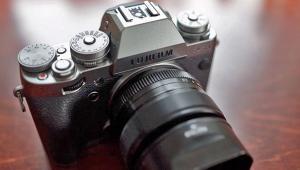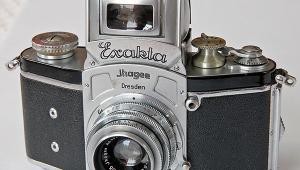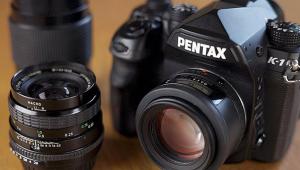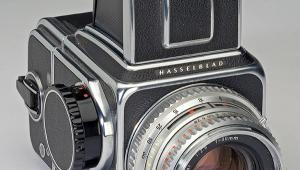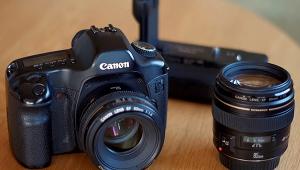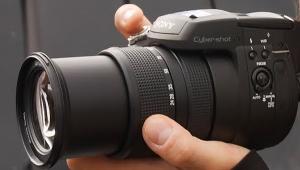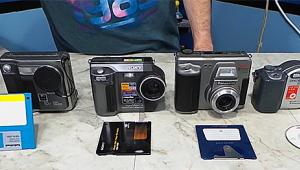Excellent post, I agree with you 100%! I’m always scouring the Internet for new information and learning whatever I can, and in doing so I sometimes leave comments on blogs. I don’t do it for SEO purposes necessarily, but to learn new things. htp://casinoko.com
Classic Cameras; The Top 20 Cameras Of All-Time Countdown; Schneider’s List, The Next Five—Do You Agree?
We took a break from the Top 20 Countdown last month to bring you all the great news from this year's PMA Show. In this issue we'll continue to count down the next five; be sure to pick up next month's issue for the Top Five and our completion of this amazing work by classic camera expert par excellence Jason Schneider. As we continue this series be sure to weigh in on our Top 20 Forum at www.shutterbug.com. --Editor
10) Leica M3--1954
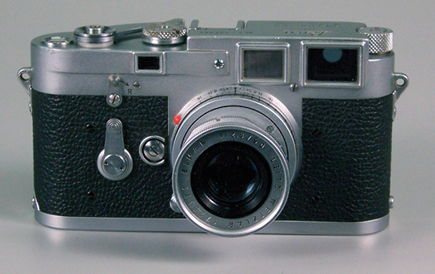 |
Widely hailed as the finest interchangeable-lens 35mm rangefinder camera ever made, the Leica M3 was the most advanced practical rangefinder 35 of its day, and also the first new from the ground up Leica in nearly 40 years. All previous Leicas were really refinements of the original Leica A of 1925, the most notable additions being a 39mm threaded lens mount and a coupled rangefinder that was cleverly finessed into and onto the classic body.
The most significant advances in the M3 are a magnificent long base (68.5mm) nearly life-size (0.9x) combined range/viewfinder with true projected, parallax-compensating, auto-indexing framelines for 50mm, 90mm, and 135mm lenses; the M-type bayonet mount; a two-stroke film-advance lever (later modified to provide single-stroke operation); and a hinged back section to facilitate cleaning, shutter checking, and aligning the film. A translucent light-collecting window in between the rangefinder and viewfinder windows provides illumination for the bright, crisp white finder framelines, and a frameline-selector lever below the front viewfinder window lets you visualize the effect of mounting other lenses.
But merely enumerating its outstanding features hardly does justice to this exquisitely refined machine. The integration of its various components is brilliant. Its rubberized, 1-1/1000 sec plus B, cloth focal-plane shutter is whisper quiet. Its contours mold seamlessly to your hands, and its shutter release, wind lever, and focusing mount operate with an uncanny silky precision. Within a few years leading Japanese manufacturers, notably Nikon and Canon, produced splendid rivals to the Leica M3 with multi-frame range/viewfinders and much more (e.g., the Nikon SP and Canon VI-T), but none ever equaled, much less surpassed, the Leica in terms of overall excellence of design. Perhaps the greatest tribute to the Leica M3 (and its rare pro version, the original MP) are the legacy of memorable images it has produced in the hands of top photojournalists, and the fact that it still endures.
The Leica M3 is a fantastic user collectible, but very hard to find in mint or near-mint condition. The single-stroke version of the mid-'60s, with more rugged, durable wind and shutter mechanisms, a larger exit pupil for enhanced finder brightness, and serial number above 1,100,000 is especially prized (and more expensive), and early two-stroke models in average condition are more affordable. Favored lenses are the collapsible 50mm f/2 Summicron, the Dual-Range 50mm f/2 Summicron, which gets down to 19" and comes with an optical range/viewfinder adapter affectionately known as goggles, and the rigid 50mm f/2 Summicron which is more common, hence less costly. Any Summicron or the 50mm f/2.8 collapsible Elmar in good condition is likely to be an outstanding performer, but collectors should assure that lens and body are of similar vintage. A really clean, functional, single-stoke M3 with a rigid 50mm f/2 Summicron lens sells for $4000 and up, but a two-stroke model with lens and body in average condition can be found for $1500-$2000.
9) Konica C35AF--1979
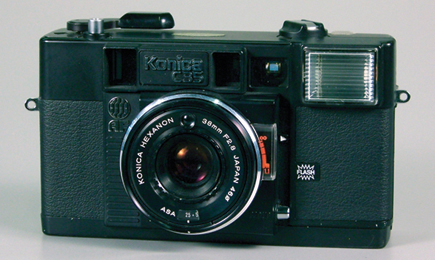 |
This is the first autofocus still camera in the world, and it sired legions of point-and-shoot AF 35mm cameras produced by virtually every manufacturer of 35mm cameras. The C35AF uses the patented Honeywell Visitronic autofocus system, basically a passive, dual-image comparator linked to the lens' focusing mechanism by an electromechanical system. As you wind the advance lever to cock the shutter, the lens moves completely forward to a ready position. When you press the shutter release, the lens begins to move backward under spring tension until it receives an electrical signal indicating proper focus. At that instant, a claw engages a toothed rack affixed to the internal lens barrel and locks the lens in proper focus position. The signal is generated by the Visitronic module, in effect, a photoelectric rangefinder that compares the subject details detected by stationary and moving photocells. When the details in both cells are identical, the moving photocell stops, and the focus-locking signal is generated.
The Visitronic system is relatively primitive compared to the active infrared AF ranging systems used in most current point-and-shoots, and the vastly improved passive systems used in most AF SLRs. However, it was good enough to provide decent AF performance with the 38mm f/2.8 Hexanon lens of the Konica C35AF, and to inspire hordes of competitors to enter the fray, creating an entirely new camera category. About a year and a half later, Canon brought forth the C35AF (familiarly known as the Sure Shot), which added auto wind, motorized rewind, easy loading, and active AF to the mix. The Canon Sure Shot, a best seller, was the first modern auto-everything point-and-shoot 35, lacking only a DX auto film speed setting and fully automatic rewind (you had to push a button).
Other features of the Konica C35AF include electronically-programmed apertures from f/2.8 to f/22; electronically-programmed shutter speeds of 1/60, 1/125, and 1/250 sec; direct optical viewfinder with parallax-compensation markings and "use flash" LED; ASA settings 25-400; built-in manual pop-up auto flash; single-stroke film-wind lever; manual rewind; hinged back; and manual film loading. The approximate camera-set autofocus distance is read out on a little scale to the left of the lens. The C35AF was rather expensive ($283) for a camera of such modest specs, but it was a good picture-taker and it sold very well on the basis of its groundbreaking technology. While the Konica C35AF is undoubtedly a premier historical landmark camera, it is not avidly collected, and clean, working examples can be found for under $100.
8) Minolta Maxxum 7000--1985
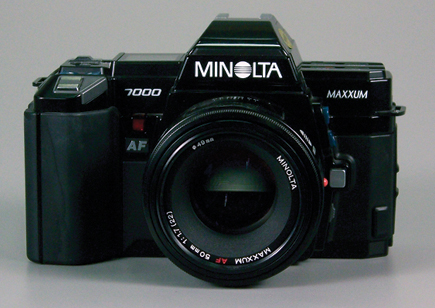 |
The world's first fully integrated autofocus SLR with the AF system built into the body, the Maxxum 7000 created a sensation when it was first announced, and was a phenomenal sales success that catapulted Minolta into the technological forefront. It was swiftly followed by competitive 35mm AF SLRS, notably the Nikon N2020 (1986) and later ('87) by the Canon EOS 650 (with AF motors in the lenses) and the Pentax SF-1 (with built-in pop-up flash). Today, virtually every 35mm and digital SLRs have autofocus capability, a clear indication of the Maxxum 7000's profound influence on the photo industry.
Nevertheless the Maxxum was preceded by three SLRs that did offer some autofocus capability. The Pentax ME-F of '81 had an in-body AF module, but the focusing servo motor and four AA batteries were located in the 35-70mm f/2.8 SMC Pentax AF lens, making the lens very bulky. Low-light AF performance and sales were marginal. The Olympus OM-F ('83) was basically a limited distribution version of the autoexposure OM-G with the addition of an in-finder electronic focusing aid. The Nikon F3AF ('83), the most successful pre-Maxxum AF SLR, was essentially a Nikon F3 with a special High Eyepoint autofocus finder that coupled with two autofocus Nikkor lenses with built-in micro motors, an 80mm f/2.8 and a 200mm f/3.5. It was very expensive but sold in modest numbers, mostly to pros.
The Minolta Maxxum 7000's specs are impressive indeed. It features an in-body passive AF system and autofocus motor that couples to the focusing mounts in the AF lenses via a keyed shaft, a system used by the majority of AF SLRs made today. Light from the lens passes through a semi-silvered area of the rapid-return mirror and is reflected down to a CCD array phase detection system at the bottom of the mirror chamber. A four-stage micro motor turns a keyed rod on the lens mount which connects to a keyed slot on the back of each Maxxum AF lens, driving the focusing helical until the lens, and screen image, are in focus. The autofocus area is indicated by a rectangle in the center of the viewfinder screen.
- Log in or register to post comments

